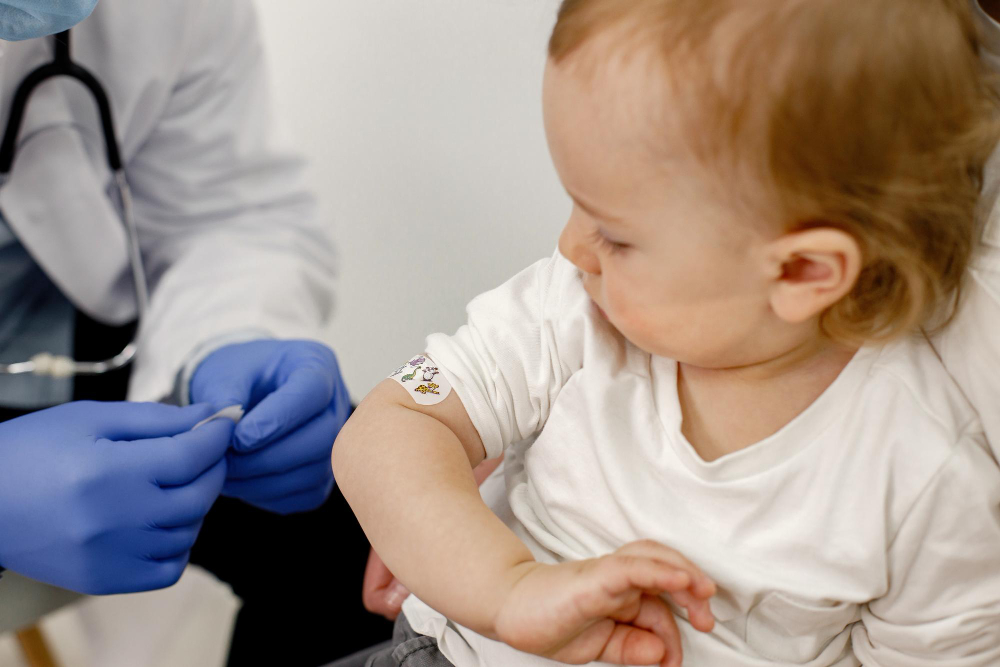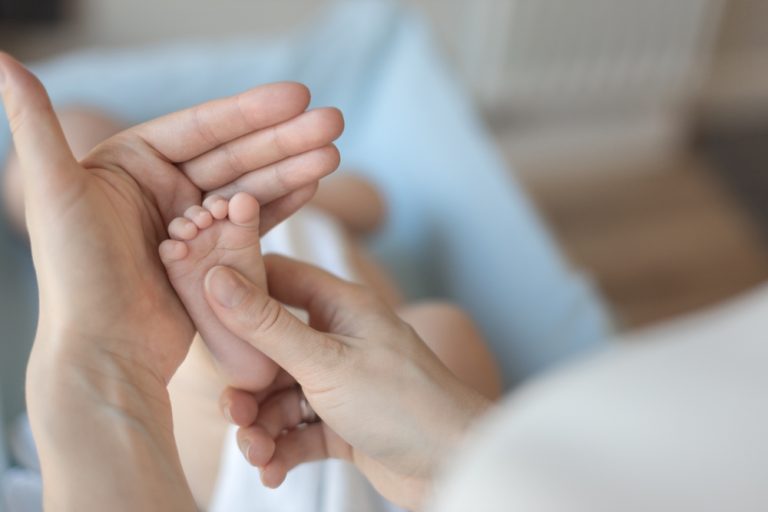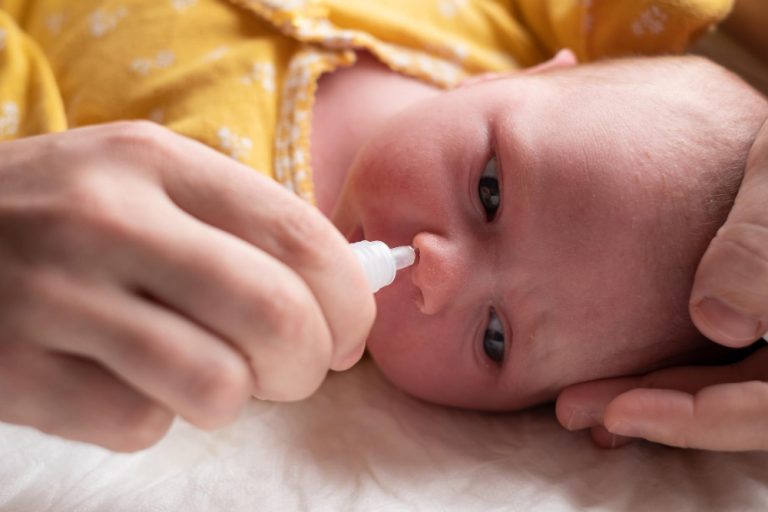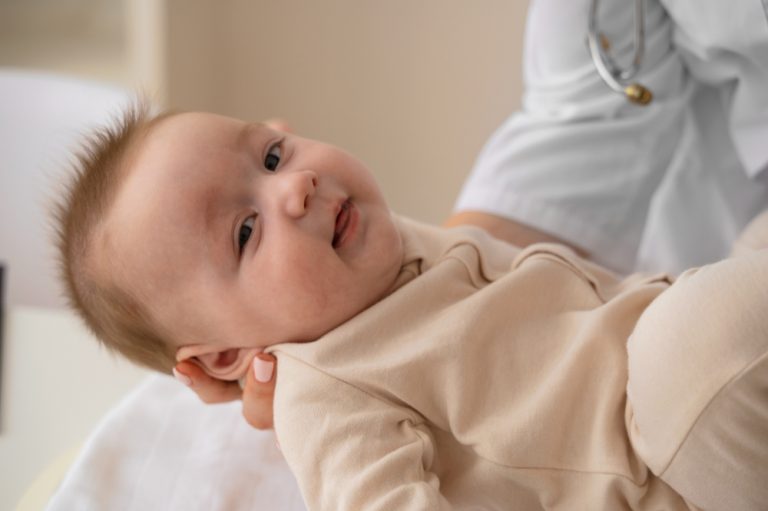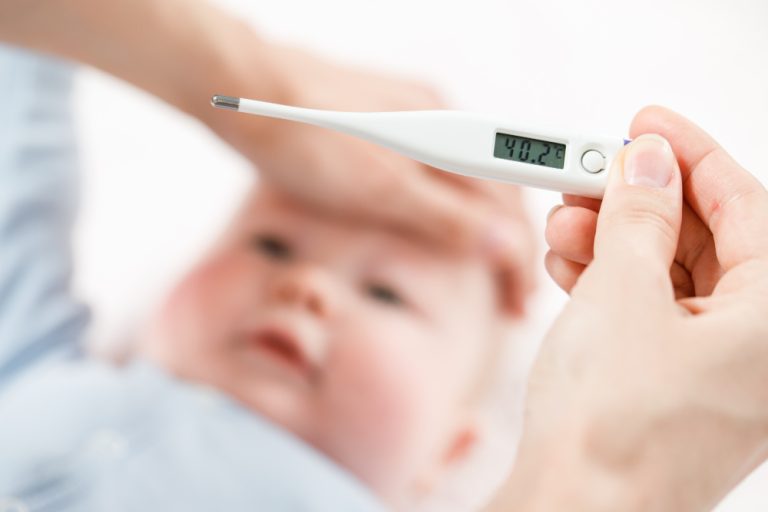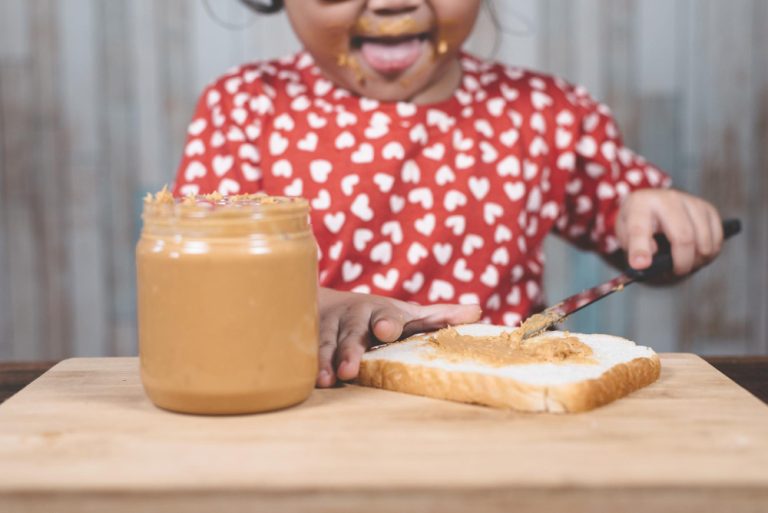How To Relieve Pain After Vaccination In Babies?
Does the thought of your baby experiencing discomfort after vaccinations leave you feeling anxious? Do you know how to relieve pain after vaccination in babies? As a parent, witnessing your little one in pain can be heart-wrenching. However, there are expert-backed techniques and tips to help alleviate this distress and make the post-vaccination period more soothing for both you and your baby.
In this blog, we delve into evidence-based strategies to ease your baby’s vaccination pain and reduce their anxiety. From practical ways to comfort and soothe babies during and after vaccinations to the use of topical anesthetics and distraction aids, we’ll explore a range of approaches aimed at creating a calm and supportive environment for your baby post-immunization.
Discover how to relieve pain after vaccination in babies and how you can effectively help your baby feel better and minimize their discomfort after vaccinations with these expert tips and techniques. Ease your worries and empower yourself to provide the best care for your little one during this crucial time.
Introduction to How To Relieve Pain After Vaccination In Babies?

Ensuring pain relief and comfort for babies after vaccination is crucial for their overall well-being. Vaccinations are important to protect infants from various diseases, but they can cause temporary discomfort. By effectively managing pain, caregivers can minimize distress and create a positive post-vaccination experience for their babies.
Managing pain after vaccination not only focuses on immediate relief but also has long-term benefits. When infants feel less distress, they are more likely to develop a positive association with healthcare visits, reducing healthcare avoidance behavior in the future. Additionally, effective pain relief measures can support a healthy parent-child bond, as parents feel empowered in their ability to provide comfort to their little ones.
It’s essential to recognize the significance of pain relief and take steps to minimize discomfort after vaccinations. By creating a supportive and soothing environment, utilizing distraction techniques, and exploring safe pain relief options, parents can help their babies feel calmer and recover more quickly.
Remember, each baby’s pain tolerance may vary, so knowing and responding to their individual needs is vital. By implementing evidence-based strategies for pain relief, caregivers can ensure a more positive vaccination experience for their infants, promoting their overall health and well-being.
Guidelines for Creating a Calm Environment

Creating a soothing and comforting environment during and after vaccination is crucial for easing your baby’s pain and distress. Here are some expert tips and guidelines to help you create a calm environment:
1. Remain Calm and Comforting
Babies are highly perceptive and can sense their caregivers’ emotions. By remaining calm and composed, you can help create a reassuring atmosphere. Speak softly and use a gentle, soothing tone to help your baby feel safe and secure.
2. Use Gentle Touch
Providing a gentle touch can be incredibly comforting for your baby. Hold them close and stroke their back or gently rub their arms or legs during the vaccination process. This physical contact can help distract them from the discomfort and reduce their perception of pain.
3. Choose a Familiar and Comfortable Setting
Whenever possible, choose a familiar and comfortable setting for the vaccination. Your baby may feel more at ease in a familiar environment, such as their pediatrician’s office or a clinic they have visited before. Familiar surroundings can help reduce anxiety and create a sense of ease.
4. Minimize Noise and Distractions
Loud noises and distractions can add to your baby’s anxiety during vaccinations. Request a quiet room or area for the procedure, away from busy waiting areas or noisy equipment. Turning off or reducing the volume of any electronic devices can also help create a calm atmosphere.
5. Provide Comforting Objects
Consider bringing along a special toy, blanket, or pacifier that your baby finds comforting. These familiar objects can provide a sense of security and help distract them from the discomfort of the vaccination.
Remember, creating a calm environment before, during, and after vaccinations can greatly contribute to your baby’s comfort and well-being. By remaining calm, using gentle touch, choosing a familiar setting, minimizing distractions, and providing comforting objects, you can help ease your baby’s vaccine-related distress and make the experience as positive as possible.
Stay tuned for the next section on effective distraction techniques to further alleviate your baby’s vaccination discomfort.
Distraction Techniques

During vaccination, babies may experience discomfort and pain. However, there are effective techniques to divert their attention and minimize the perception of pain. Employing distraction strategies can create a more positive experience for both the baby and the caregiver. Here are some evidence-based distraction techniques that can help soothe babies during vaccinations:
1. Use Toys and Objects
Bring along a favorite toy or object that captures the baby’s attention. Offer it to them during the vaccination process, allowing them to focus on playing and exploring. The presence of a familiar object can provide a sense of comfort and distract from the momentary discomfort of the shot.
2. Engage with Music or Singing
Music has a remarkable ability to calm and divert attention. Play soft and soothing music before, during, and after the vaccination. Singing a familiar lullaby or nursery rhyme can also help soothe and distract the baby, making the experience more pleasant.
3. Engage in Interactive Play
Engage the baby in interactive play or games that capture their attention. Peek-a-boo or gentle tickling can help shift their focus away from the vaccination procedure. The anticipation of joy and laughter during play can reduce anxiety and momentarily distract from the discomfort.
4. Offer Distractions in the Form of Books or Videos
For older babies, books or age-appropriate videos can be effective distractions during vaccinations. Opt for colorful books or engaging videos that will capture their attention and immerse them in a different world, temporarily redirecting their focus from the shot.
Remember, distractions should be introduced before, during, and after the vaccination process. Creating a positive and engaging environment can make the experience more enjoyable for both the baby and the caregiver. By employing these distraction techniques, you can help minimize the perceived pain and discomfort associated with vaccinations.
Topical Anesthetics and Cooling Techniques
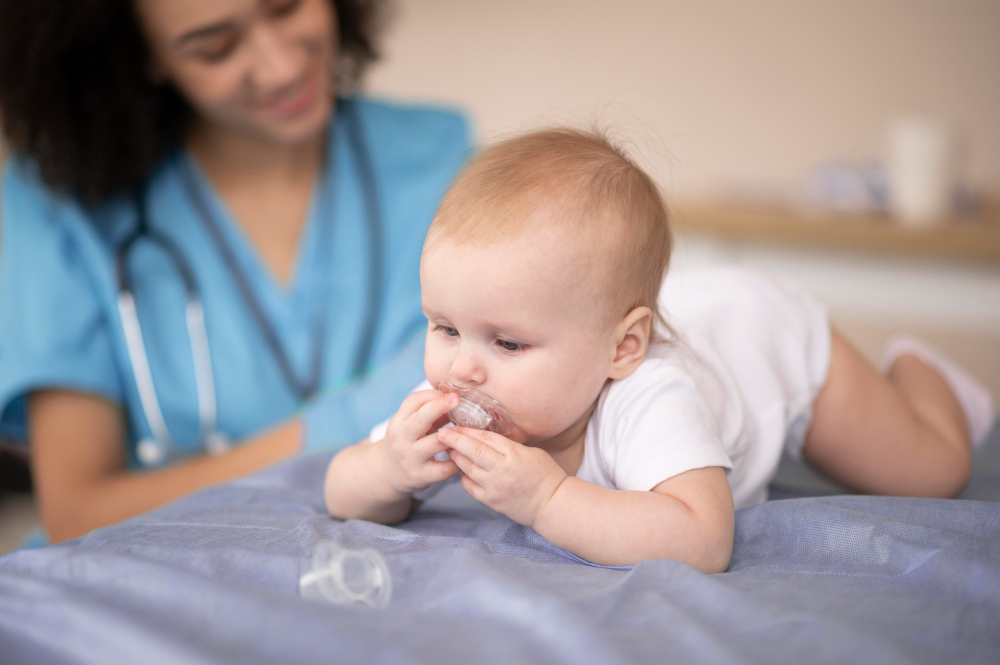
After your baby receives a vaccination, they may experience localized pain and discomfort at the injection site. Topical anesthetics and cooling techniques can be valuable tools to alleviate this discomfort and provide relief.
These methods work by numbing the area and reducing inflammation, making the post-vaccination experience more comfortable for your little one. It’s important to note that the use of topical anesthetics and cooling techniques should be done under the guidance of a healthcare professional and in accordance with their recommendations.
Topical Anesthetics
Topical anesthetics are products that can be applied to the skin to help numb the area and alleviate pain. These products usually contain lidocaine or prilocaine, which are local anesthetics commonly used in medical procedures. Before using a topical anesthetic on your baby, it is crucial to ensure that the product is specifically formulated for infants and approved by your healthcare provider.
When applying a topical anesthetic, follow these guidelines:
1. Clean the area around the injection site gently with mild soap and water.
2. Dry the area thoroughly before application.
3. Apply a thin layer of the topical anesthetic to the skin, covering the entire injection area.
4. Avoid rubbing or touching the anesthetic once it has been applied.
5. Follow the instructions provided by the healthcare professional regarding the duration and frequency of application.
Cooling Techniques
Cooling techniques can also help relieve post-vaccination pain. The application of a cold compress or ice pack can reduce inflammation and provide a soothing sensation. However, it is essential to avoid direct contact between the ice pack or cold compress and your baby’s skin. Always wrap the cold pack in a thin cloth or use a pre-packaged cold pack specifically designed for infants.
When using cooling techniques, remember these tips:
1. Place the covered cold pack gently on the injection site for a short duration, usually around 10 minutes.
2. Ensure that the temperature is not too cold and that your baby remains comfortable throughout the process.
3. Avoid prolonged exposure to cold temperatures, as it may cause discomfort or skin damage.
4. Consult with a healthcare professional before implementing cooling techniques to ensure their appropriateness for your baby’s specific needs.
By utilizing topical anesthetics and cooling techniques under proper guidance, you can help reduce your baby’s post-vaccination discomfort and create a more contented experience for your little one. Remember to consult with your healthcare provider for personalized advice on the use of these techniques and any other questions or concerns you may have.
Breastfeeding and Skin-to-Skin Contact
Breastfeeding and skin-to-skin contact are powerful natural pain relief methods that can help soothe and comfort your baby after vaccination. Not only do these practices provide physical comfort, but they also contribute to the emotional well-being of both the baby and the caregiver. Here’s why and how you can incorporate breastfeeding and skin-to-skin contact after vaccination:
Benefits of Breastfeeding
Breastfeeding offers numerous benefits beyond nutrition, including pain relief. The act of breastfeeding triggers the release of endorphins, which are natural painkillers. These endorphins not only help alleviate your baby’s discomfort but also promote a sense of calm and relaxation. Additionally, breast milk contains antibodies and immune-boosting properties that can support your baby’s recovery and overall health.
To maximize the benefits of breastfeeding after vaccination, try to nurse your baby shortly before or after the immunization. The act of breastfeeding can provide immediate comfort and reassurance during this potentially distressing time.
Skin-to-Skin Contact
Skin-to-skin contact, also known as kangaroo care, involves placing your baby directly against your bare chest. This practice has been found to have numerous positive effects, including pain reduction. The close physical contact releases oxytocin, a hormone that promotes feelings of comfort, bonding, and relaxation for both you and your baby.
After your baby’s vaccination, find a calm and quiet space where you can sit or lie down comfortably. Undress your baby and place them against your bare chest, ensuring that their skin is in direct contact with yours. Use a blanket or a wrap to keep both of you warm and cozy. Not only will this provide physical warmth and reassurance, but it can also help regulate your baby’s body temperature and heart rate.
Expert Tip
Dr. Anna Taddio, a leading expert on vaccine pain management, recommends practicing skin-to-skin contact during the immunization itself. Holding your baby close and offering them a sense of security can help ease their anxiety and reduce their perception of pain during the injection.
Remember, breastfeeding and skin-to-skin contact are natural and nurturing ways to provide comfort to your baby following vaccination. By incorporating these practices, you can create a soothing environment that promotes healing, relaxation, and emotional connection.
How to Relieve Pain After Vaccination in Babies Naturally

After vaccination, babies may experience discomfort and fussiness. As a parent or caregiver, it’s essential to have calming techniques and comforting measures in your arsenal to soothe your baby and help them recover. Here are some effective strategies that can bring comfort and alleviate post-vaccination distress:
Gentle Rocking
Rocking your baby gently in your arms or in a rocking chair can provide a calming effect. The rhythmic motion mimics the womb’s environment and helps your baby relax.
Swaddling
Swaddling is a time-tested technique that involves snugly wrapping your baby in a lightweight blanket. This can create a sense of security and warmth, allowing them to feel safe and comforted.
Pacifiers
Pacifiers can serve as a soothing mechanism for babies. The sucking motion provides a natural source of comfort and can help distract from any residual discomfort after vaccination.
Skin-to-Skin Contact
Holding your baby skin-to-skin on your chest can promote a sense of closeness and security. This technique releases oxytocin, a hormone that calms both the baby and the caregiver.
Soft Music or White Noise
Playing gentle lullabies or white noise in the background can create a soothing environment for your baby. The repetitive sounds can drown out any unfamiliar noises and provide a calming effect.
Dim Lighting
Creating a calm ambiance with dim lighting can help your baby relax and induce sleep. Soft light signals to your baby’s brain that it’s time to wind down, promoting a peaceful environment.
Remember, every baby is unique, and it may take some trial and error to find the most effective techniques for your little one. Pay attention to your baby’s cues and adapt the methods accordingly. By incorporating these calming techniques and comforting measures, you can help ease your baby’s post-vaccination unrest and create a peaceful environment for their recovery.
Pain Medications and Natural Remedies

After your baby receives vaccinations, it’s natural to want to alleviate any discomfort they may experience. Here are pain medications and natural remedies that can be used to help alleviate your baby’s post-vaccination discomfort. It’s important to note that before giving any medication to your baby, always consult with their healthcare provider and follow their guidance.
Pain Medications
1. Acetaminophen (Tylenol)
Acetaminophen is commonly recommended by healthcare professionals for relieving pain and reducing fever in infants. Always ensure you follow proper dosage instructions based on your baby’s weight and age. Remember, never exceed the recommended dosage.
2. Ibuprofen (Advil, Motrin)
Ibuprofen can also be used to relieve pain in infants over six months old. However, it’s essential to consult your baby’s healthcare provider before administering ibuprofen and carefully follow the recommended dosage guidelines.
Natural Remedies
1. Breastfeeding
Breastfeeding can provide both physical and emotional comfort to your baby. The act of breastfeeding releases hormones that naturally reduce pain and promote relaxation.
2. Skin-to-Skin Contact
Gentle skin-to-skin contact with your baby can help soothe and calm them. This technique has been shown to release calming hormones, promoting a sense of security and reducing discomfort.
3. Warm Compress
Applying a warm compress to the vaccinated area can help alleviate pain and reduce inflammation. Ensure the compress is not too hot, and gently press it against the site for a few minutes at a time.
4. Sugar Water
Giving your baby a small amount of sugar water before or during the vaccination procedure can help reduce pain. However, it’s important to consult with your healthcare provider before using this method.
Remember, natural remedies should be used in conjunction with, not as a substitute for, professional medical advice. Always consult with your baby’s healthcare provider before trying any natural remedy.
It’s important to prioritize your baby’s comfort. Ensure a calm and soothing environment post-vaccination, and provide plenty of love, care, and attention. If you have any concerns or questions about pain relief options, don’t hesitate to reach out to your baby’s healthcare provider.
Self-Care for Caregivers

As a caregiver, it is essential to prioritize your own well-being while tending to your baby’s needs. Taking care of yourself allows you to provide the best possible care for your little one. Here are some essential self-care practices to consider during and after the vaccination process:
Seek Support from Healthcare Professionals
Reach out to healthcare professionals for guidance and support. They can address any concerns or questions you may have regarding your baby’s vaccination. A trusted healthcare provider can offer reassurance and provide accurate information, easing any worries you may have.
Manage Stress and Anxiety
Managing stress and anxiety is crucial for caregivers. Take time to practice self-calming techniques such as deep breathing, mindfulness exercises, or meditation. These techniques can help reduce stress levels and improve your overall well-being.
Prioritize Rest and Sleep
Ensure you are getting enough rest and sleep. Take breaks when needed and ask for help from family members or friends to relieve some of the caregiving responsibilities. Adequate rest will help you stay mentally and physically strong to care for your baby effectively.
Engage in Relaxation Activities
Engaging in activities that bring you joy and relaxation can help alleviate stress. Whether it’s reading a book, taking a bubble bath, going for a walk, or practicing a hobby, make time for activities that recharge and rejuvenate you.
Connect with Others
Stay connected with friends, family, or support groups who can offer emotional support and understanding. Share your experiences and concerns, as talking openly can help you process any anxieties or worries you may have.
Remember, taking care of yourself is not selfish but necessary for providing the best care for your baby. By seeking support, managing your own stress, prioritizing rest, and engaging in relaxation activities, you can navigate the vaccination process more confidently and ensure both you and your baby’s well-being.
FAQs: How To Relieve Pain After Vaccination In Babies?
The Final Note: How To Relieve Pain After Vaccination In Babies?
To sum up, vaccinations are important for the well-being of our babies, but they can cause temporary discomfort. By effectively managing pain and distress, we can help minimize the negative impact of vaccination and create a positive experience for both the baby and the caregiver.
In this blog, we have discussed evidence-based strategies around how to relieve pain after vaccination in babies and reduce their anxiety, including creating a calm environment, distraction techniques, and the use of topical anesthetics.
Remember, each baby’s pain tolerance may vary, so it’s essential to know and respond to their individual needs. By implementing the tips and techniques discussed in this blog, you can help your baby feel better and minimize their discomfort after vaccinations.
So, empower yourself and provide the best care for your little one during this crucial time. If you have any other queries or concerns regarding your baby’s health, don’t hesitate to consult with your pediatrician.

